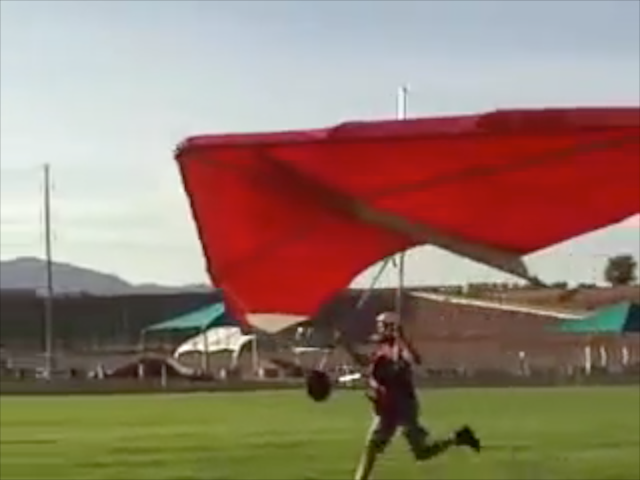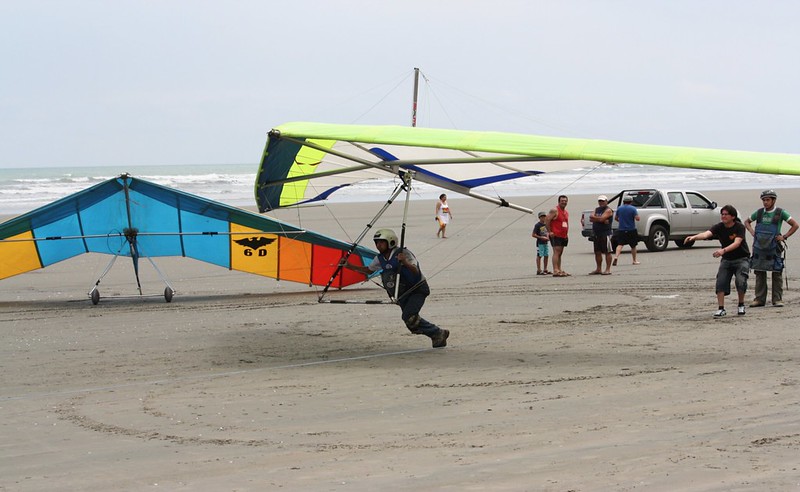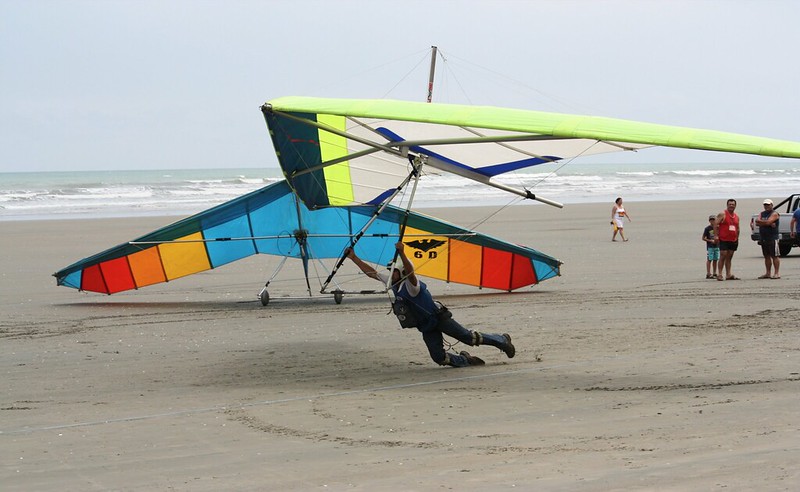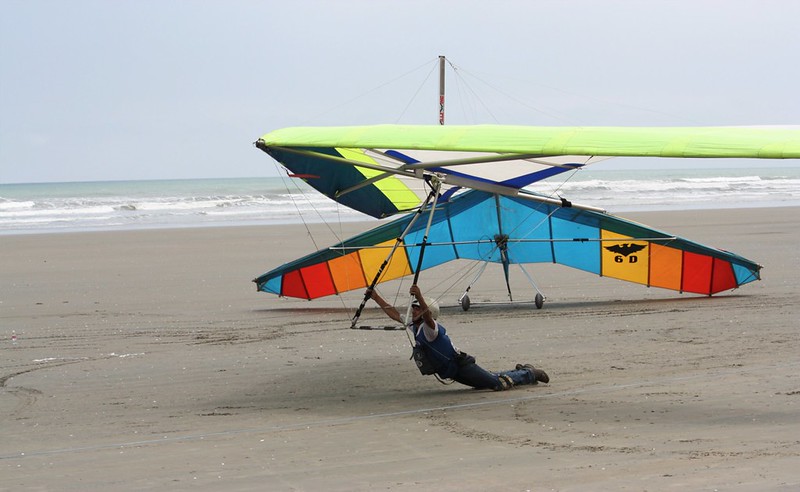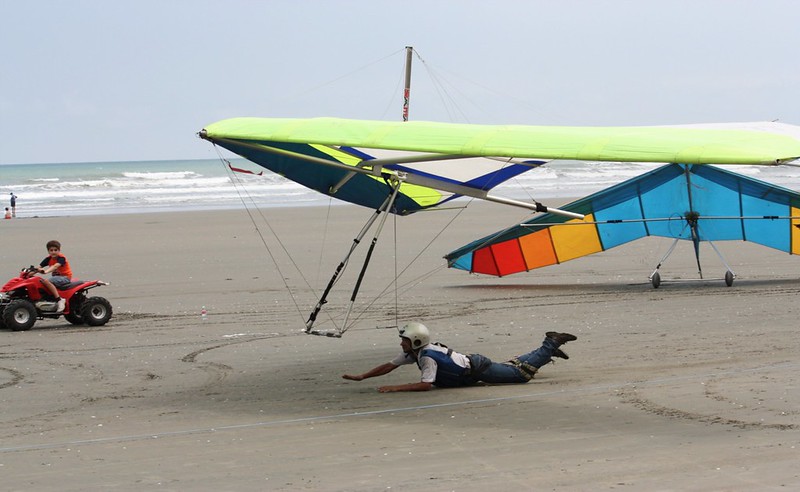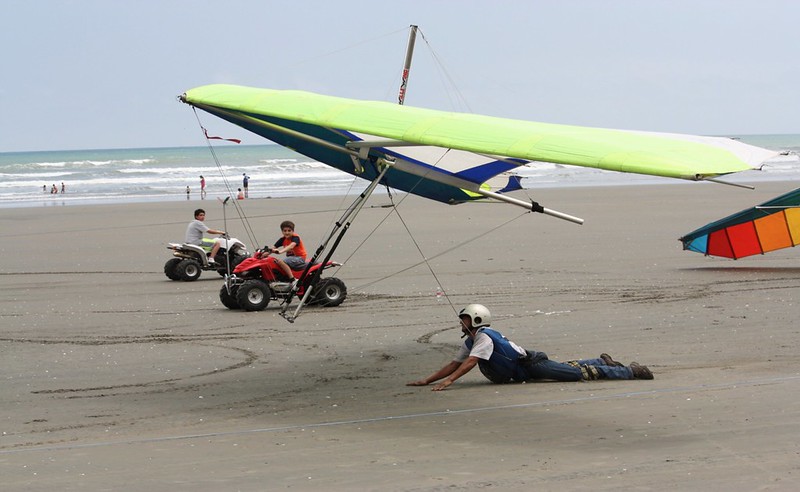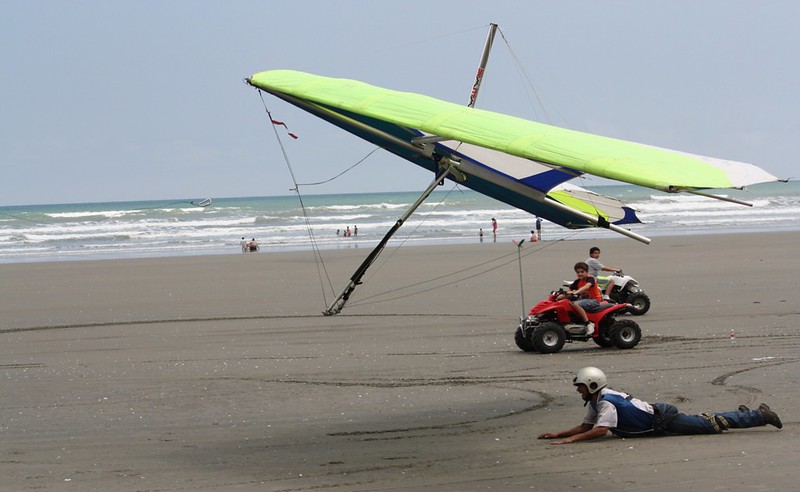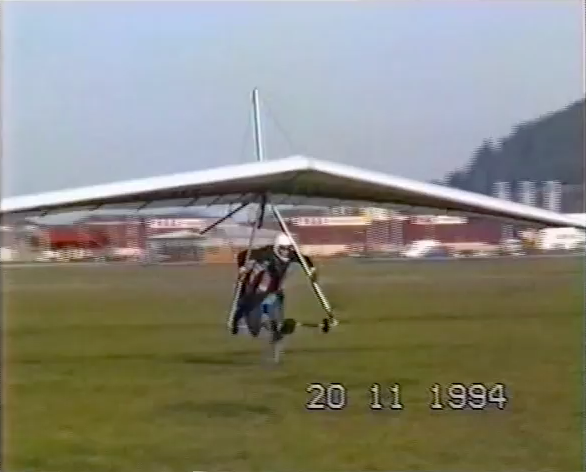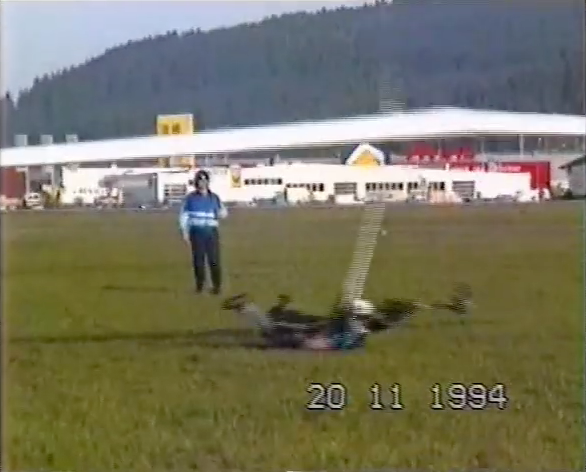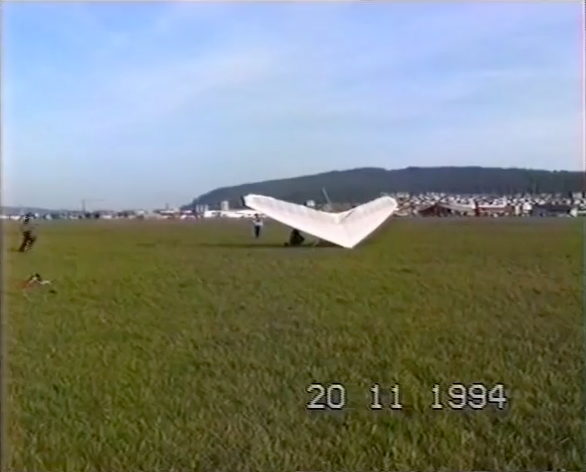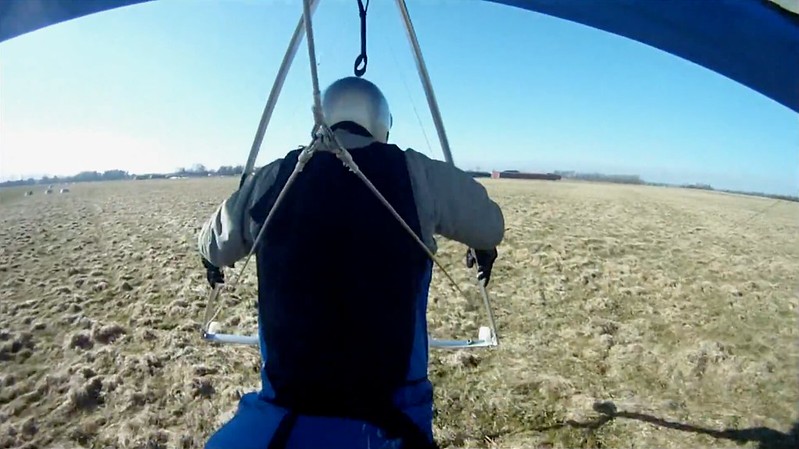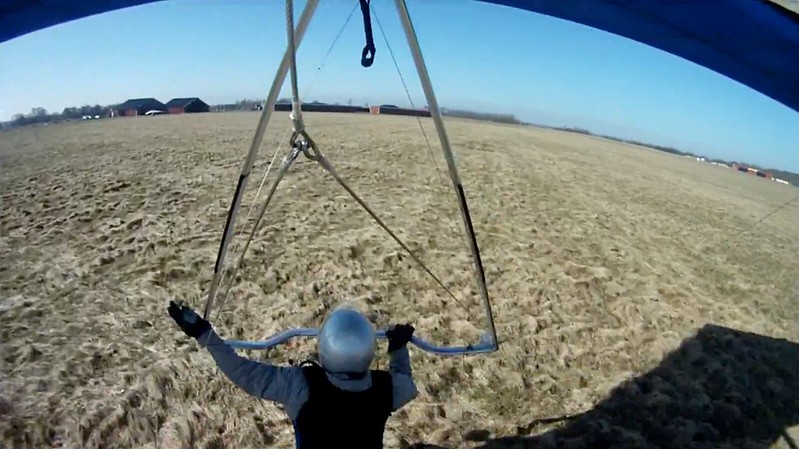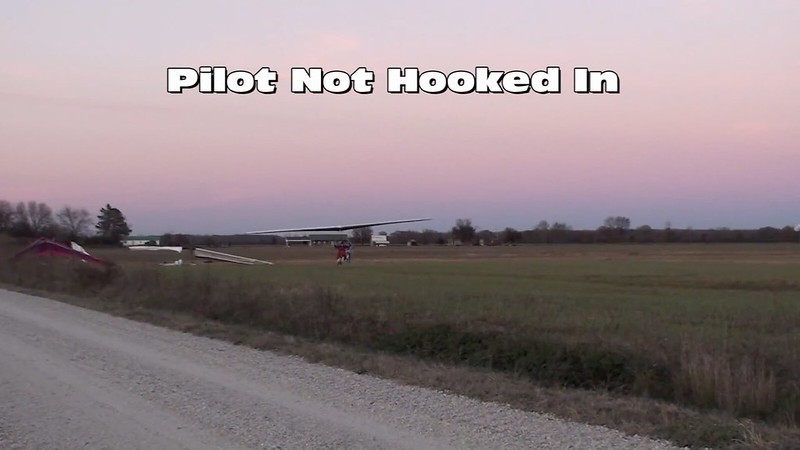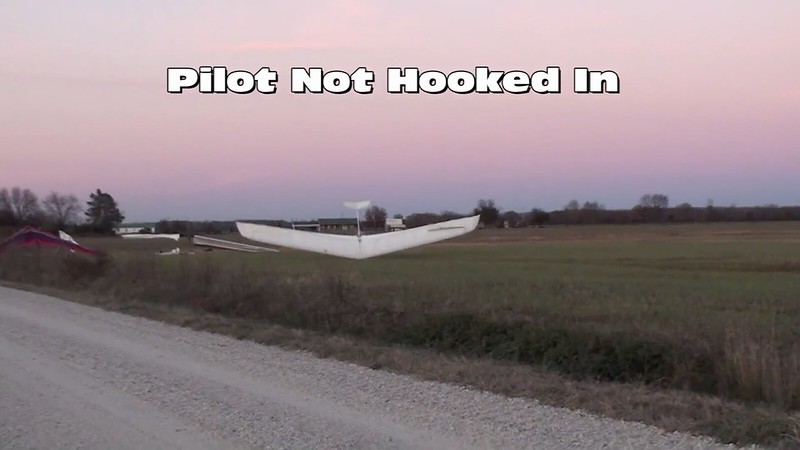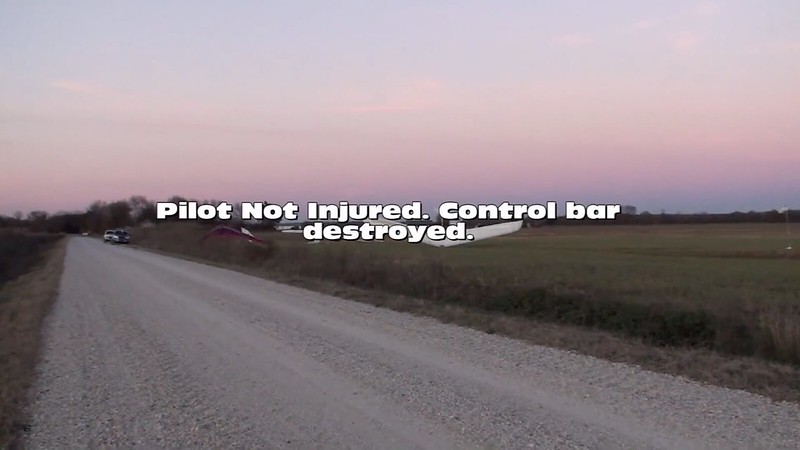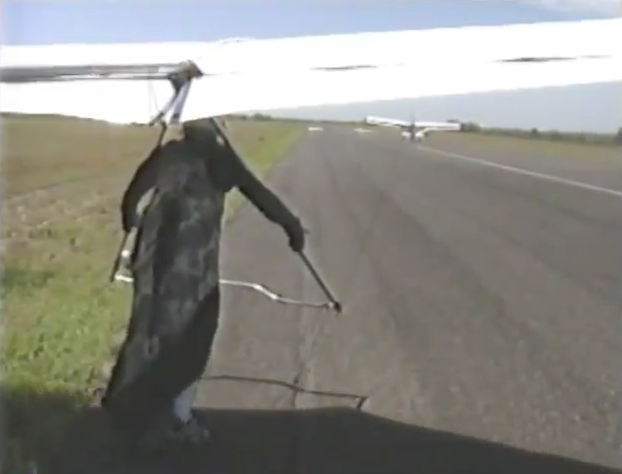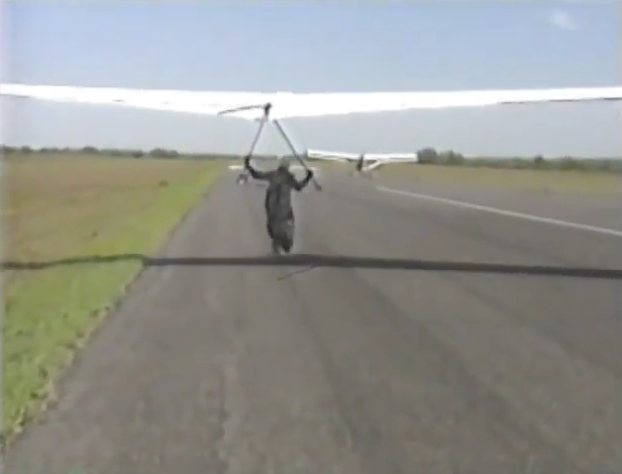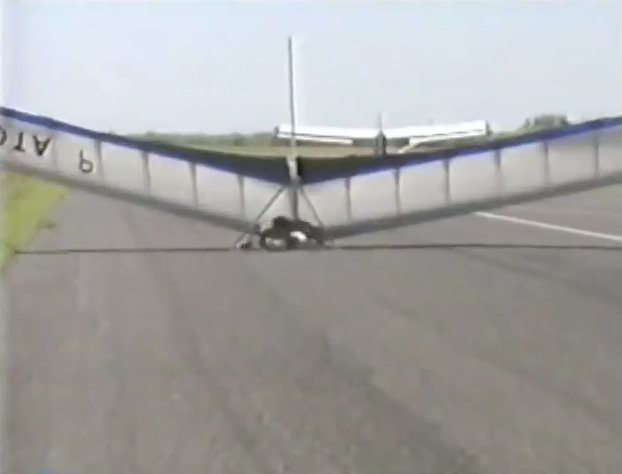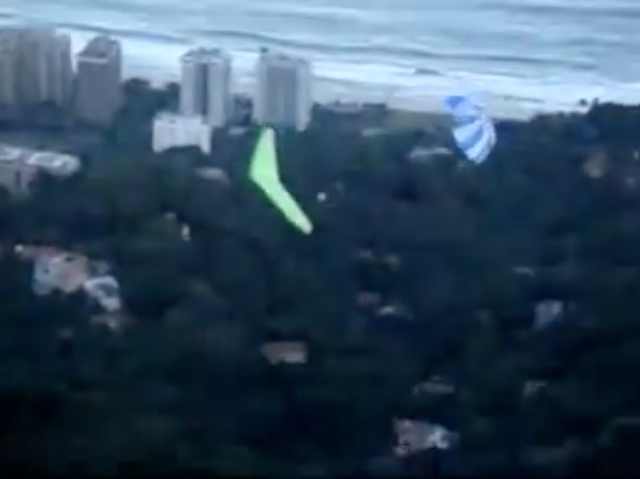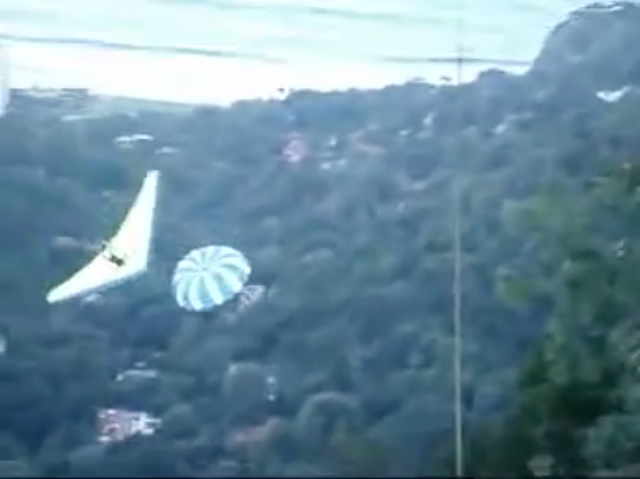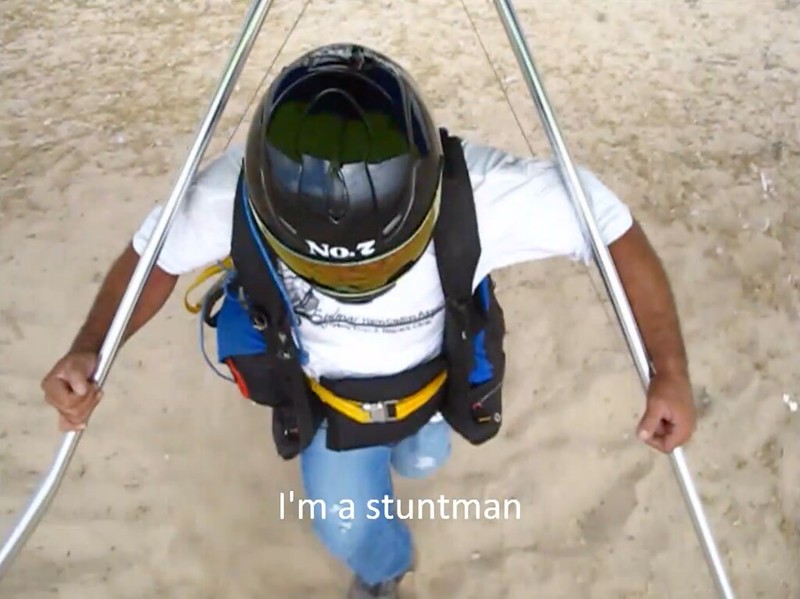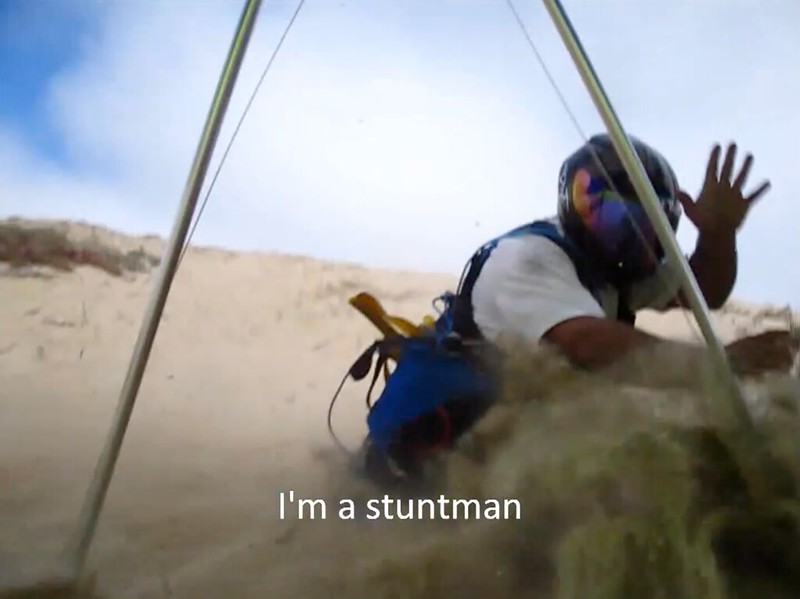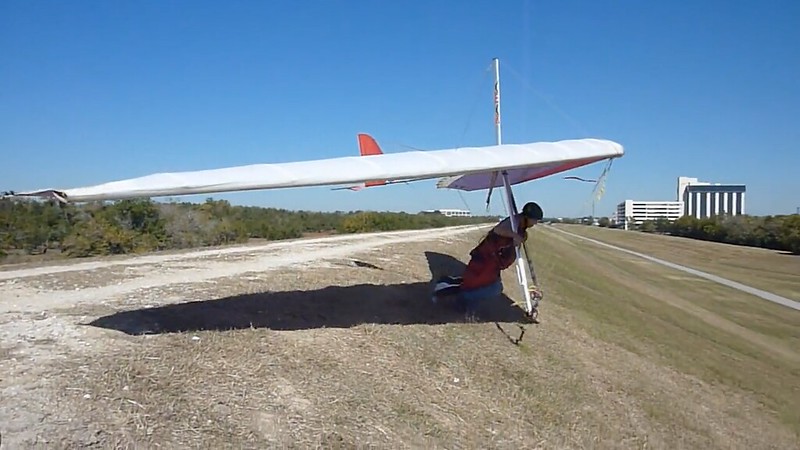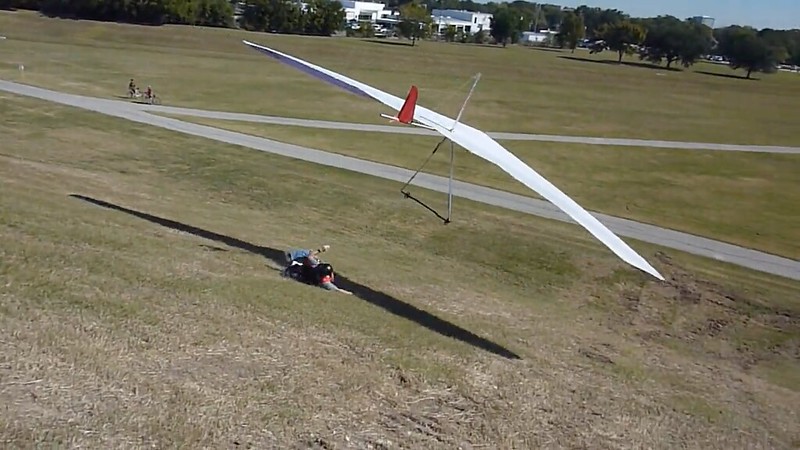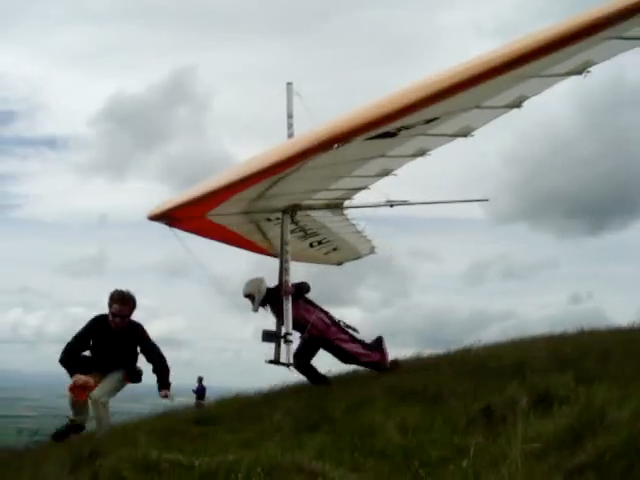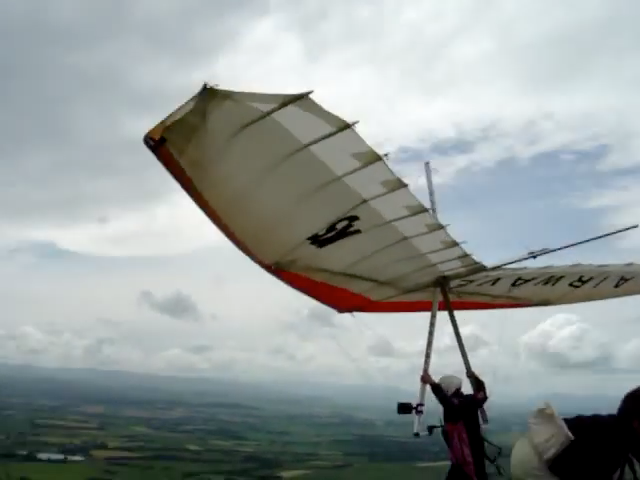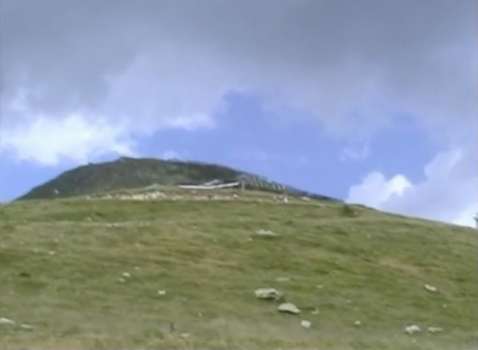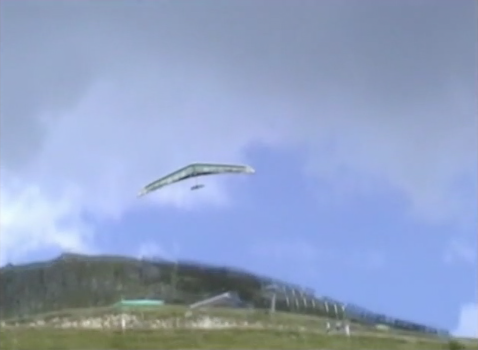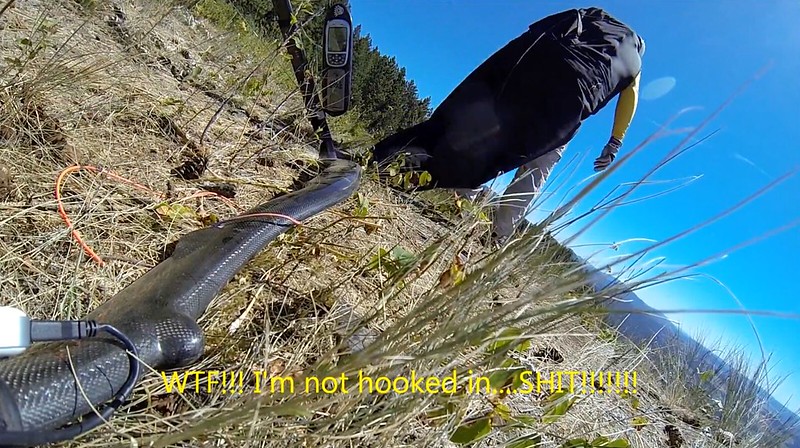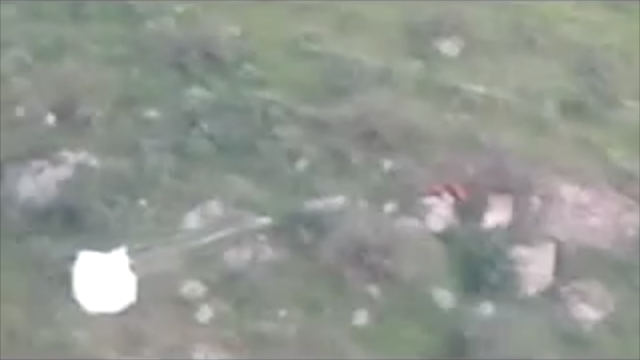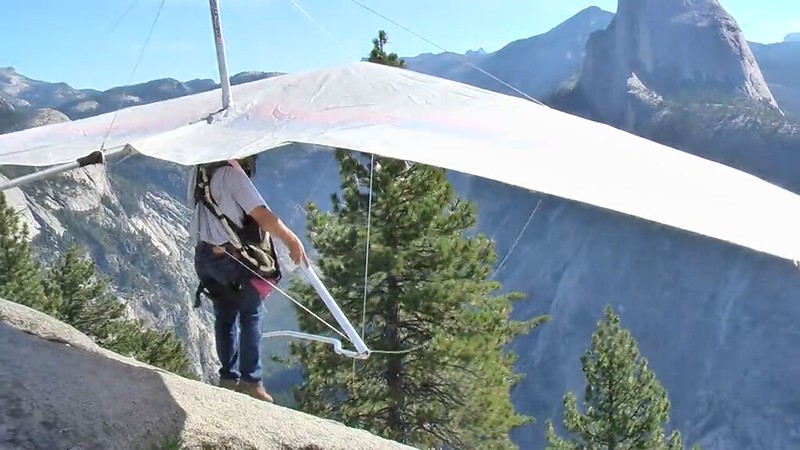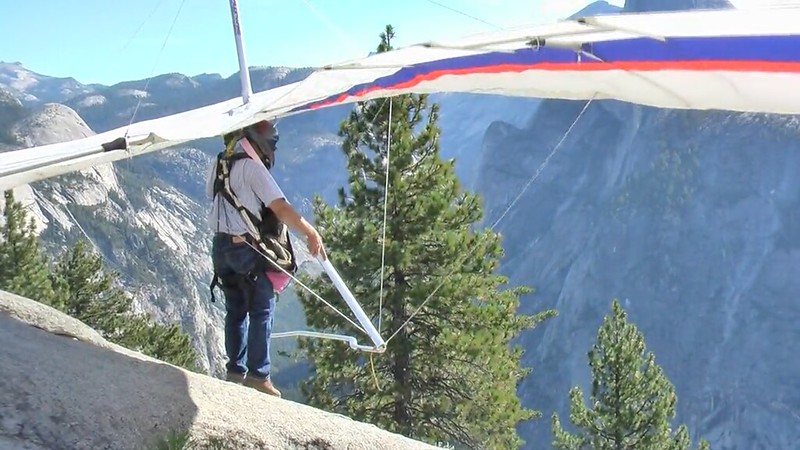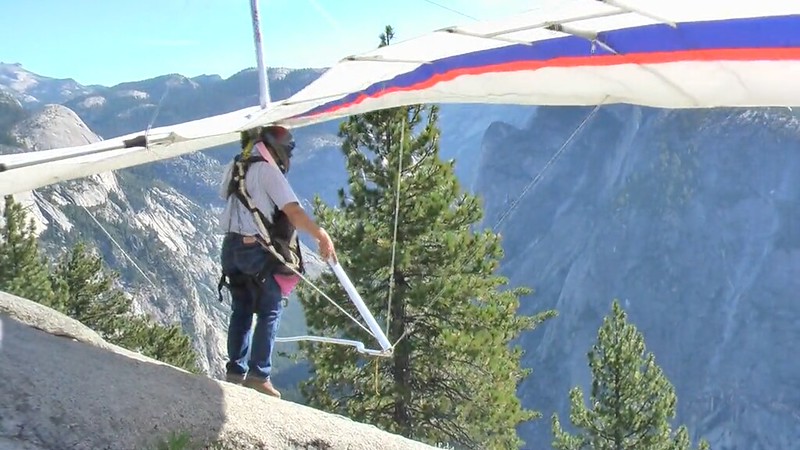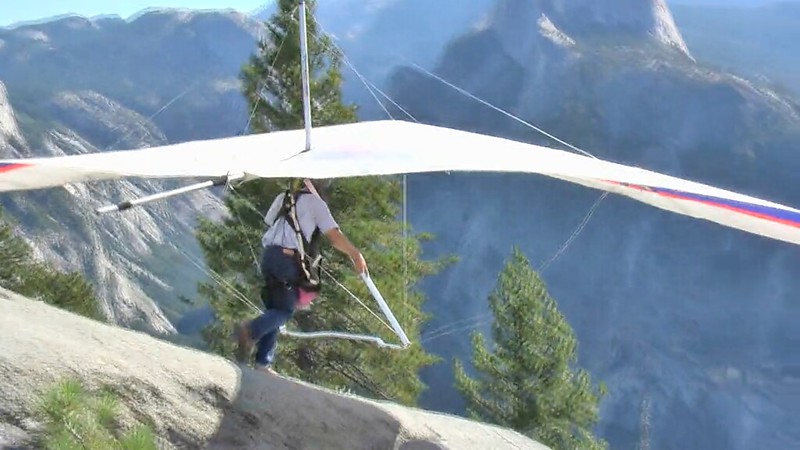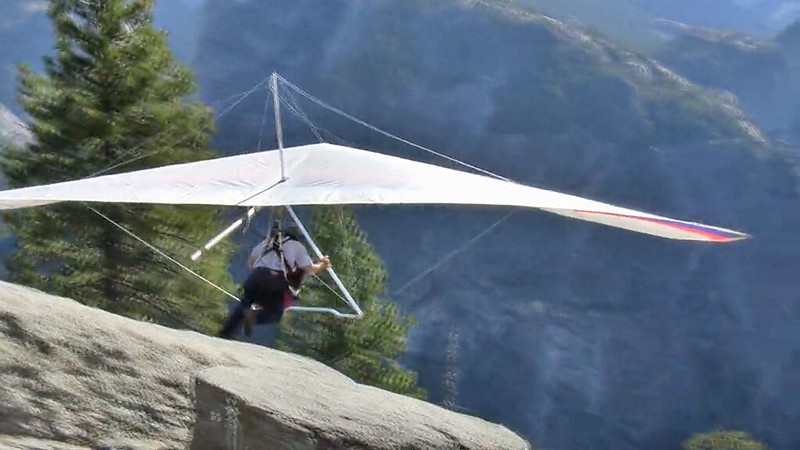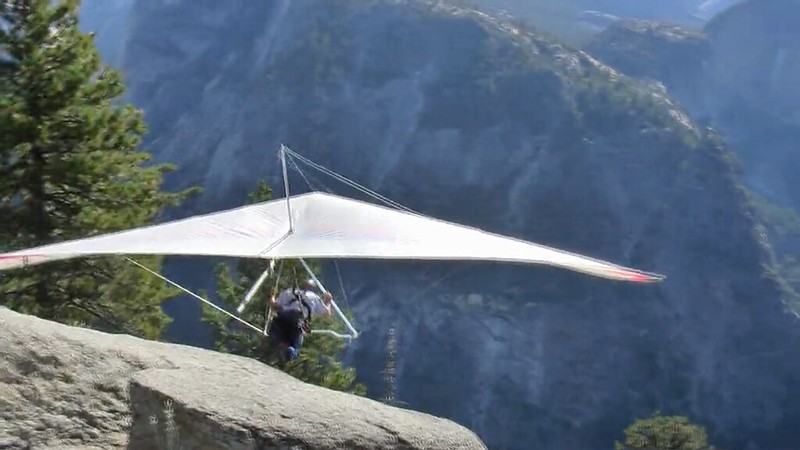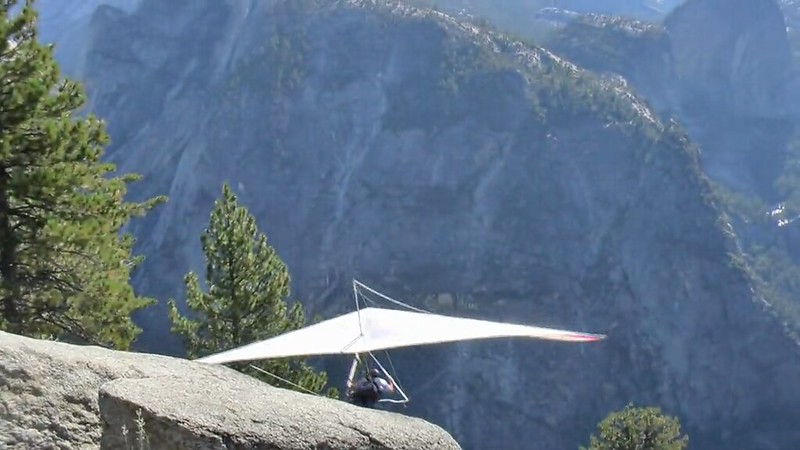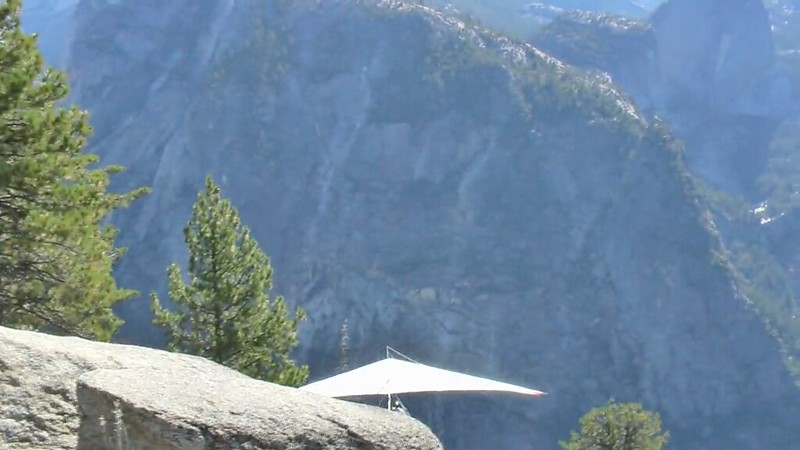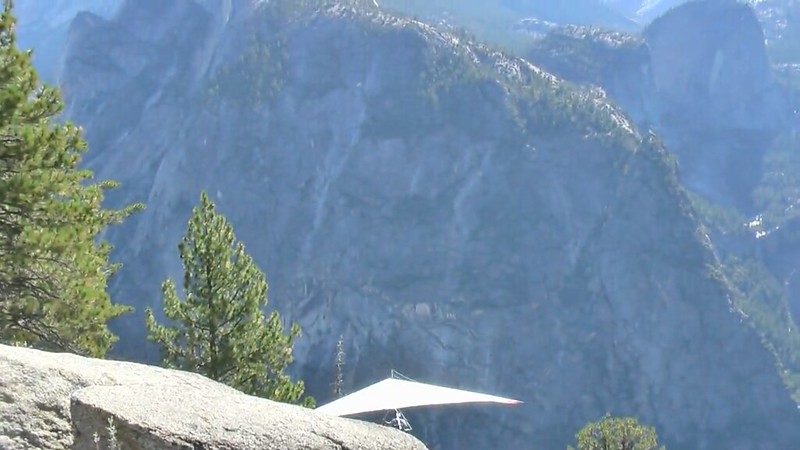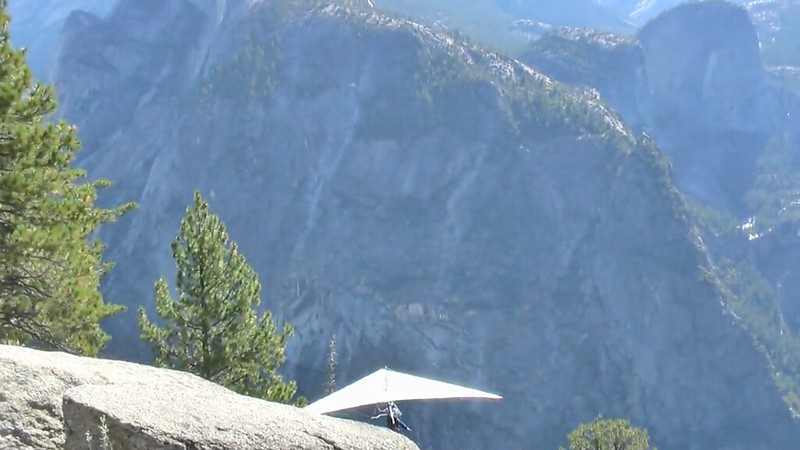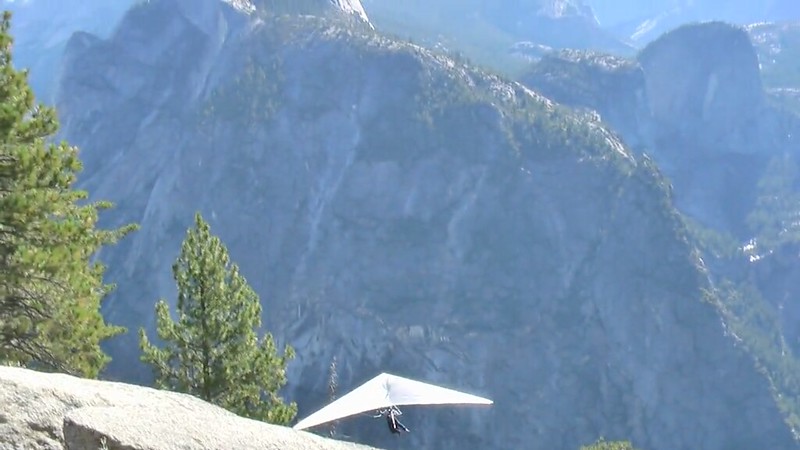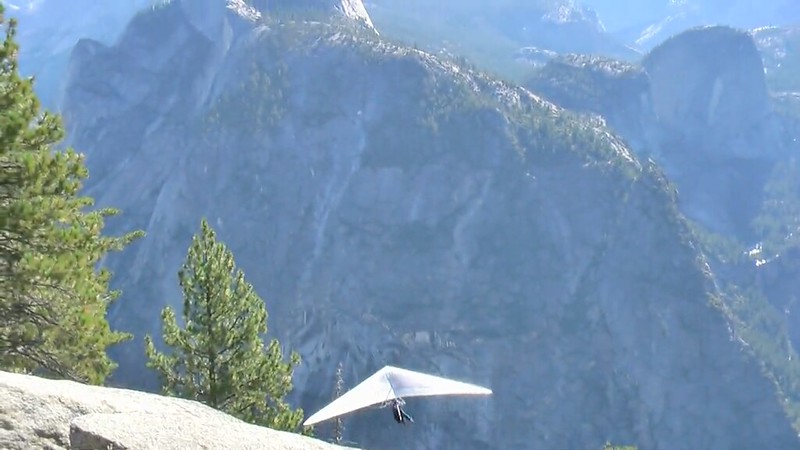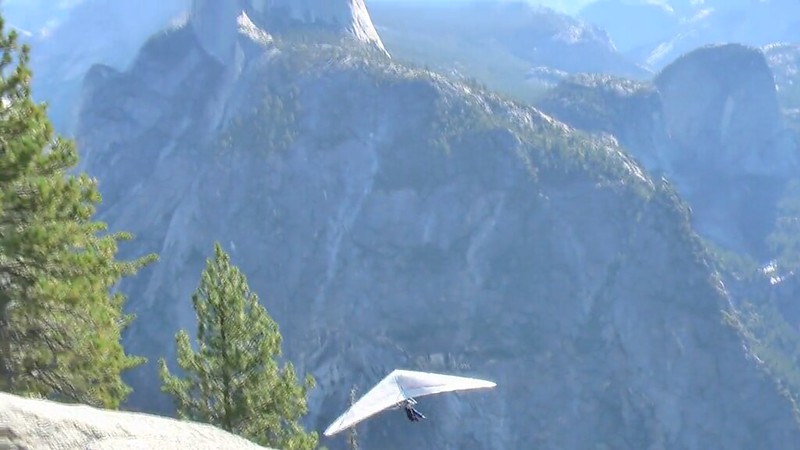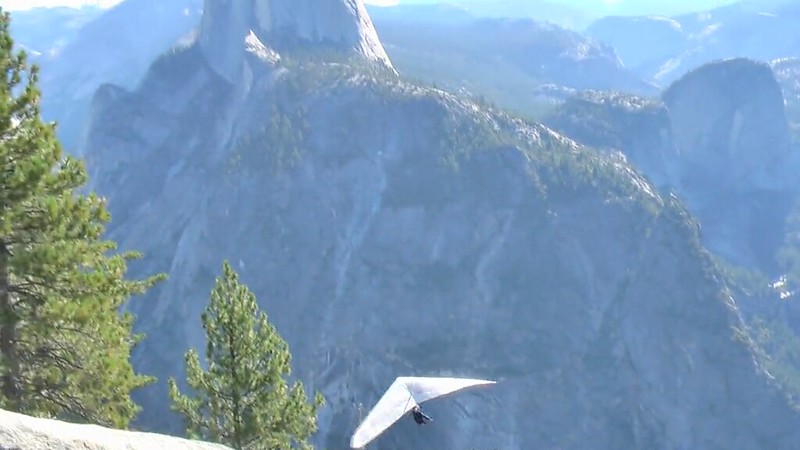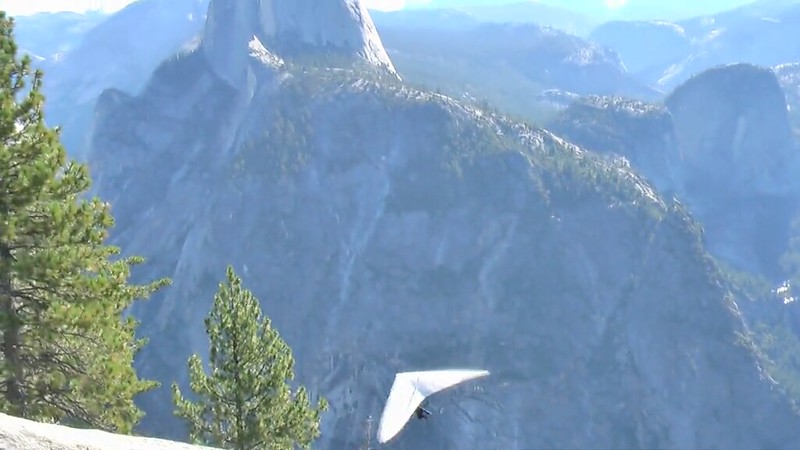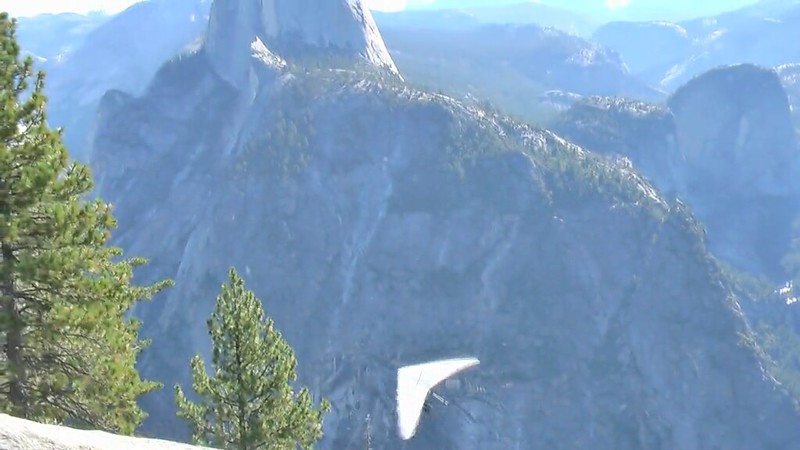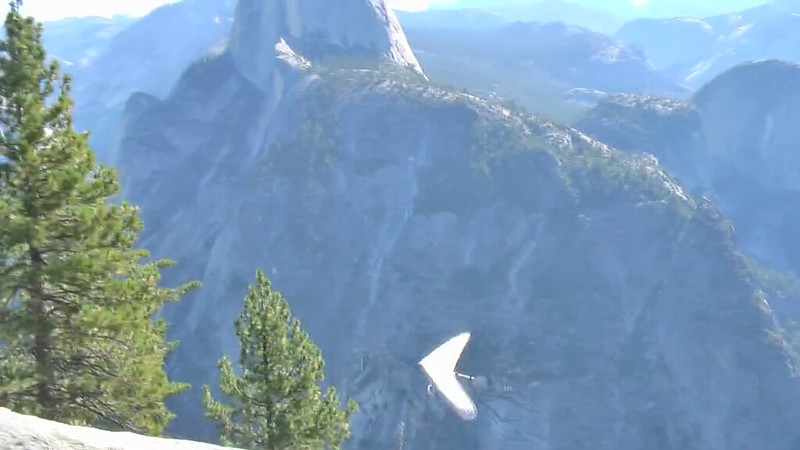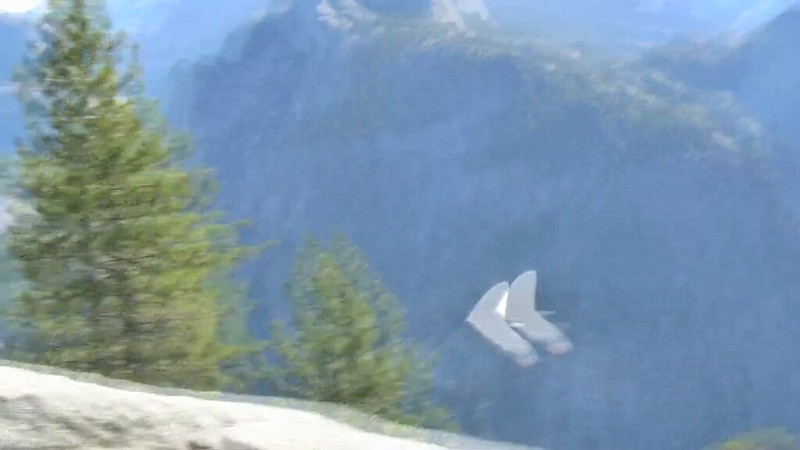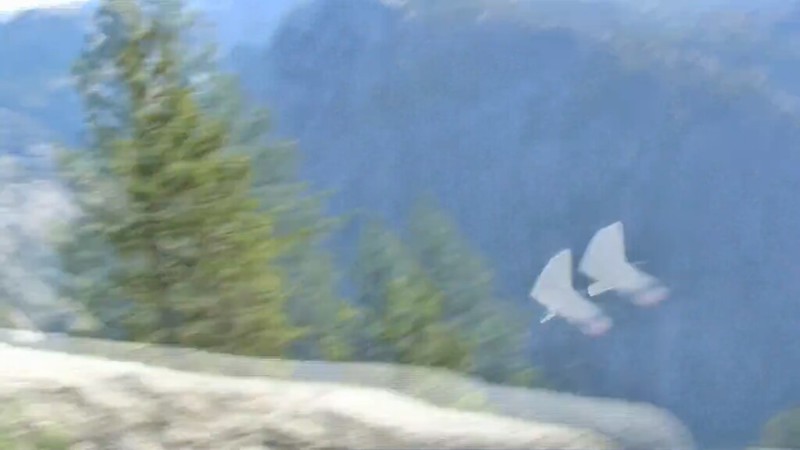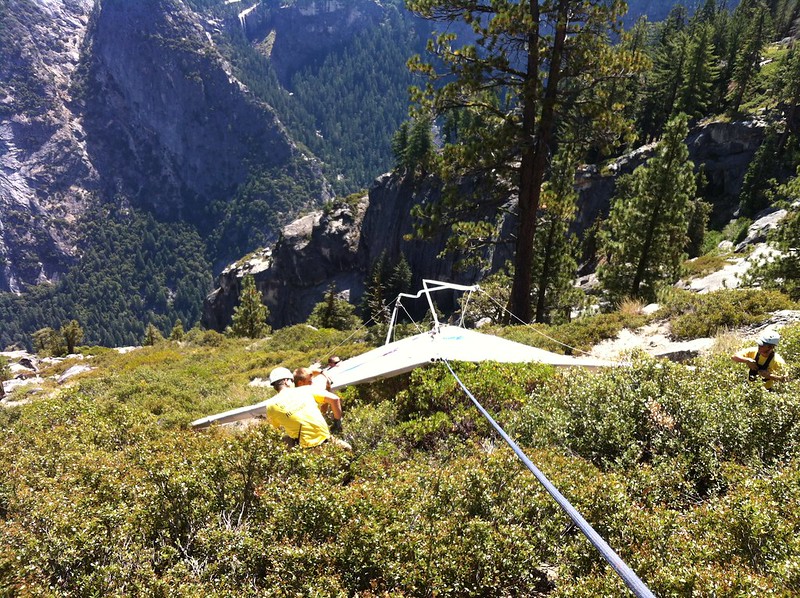http://cliff-euro.blogspot.com/2014/08/two-disclocated-vertebrae-in-my-neck.html
Cliff's European Adventure: Two Disclocated Vertebrae in my Neck, Surgery Scheduled
23-41510Cliff Rice - 2014/08/09 00:36:00 UTC
Two Disclocated Vertebrae in my Neck, Surgery Scheduled
I just got back from the neurosurgeon.[/quote]
Did you see any other glider jockeys there?
23-41510He says I have two dislocated vertebrae. Where each vertebra aligns with the next one, there are two "facets" which are like the "hooks" to keep the vertebrae aligned. Two vertebrae "jumped" forward -- their hooks are now in the wrong place, and they are now stuck there. To fix it, they will have to do surgery to relocate the vertebrae into their original positions and then they will use 13mm screws (permanent) to stabilize them. That's the best I can understand/explain it now. It seems to make sense, given that the force of the impact was probably down and forward on my head. The reason for the pain in my right shoulder, and my inability to lift my right arm, is that the dislocated bones are putting pressure on my spinal cord, and it's messing with some nerves.
My surgery is scheduled for Tuesday, August 19th at 7:30 Eastern Time at Bayfront Medical Center with Dr. Jobe. Your prayers are appreciated.[/quote]
Sorry, I don't do prayers. Seen too many examples of God not doing any more shit after somebody's near totaled than he did to keep him from not getting near totaled to begin with. A god who cared about the people in hang gliding would've made damn sure Jim Keen-Intellect Rooney had roasted to well done before he'd let him drop out of those powerlines.
23-41510In the meantime they put me in a brace as a precaution. It keeps me from moving my neck very far, and also provides some protection in the case of a shock (such as a fender-bender).
Estimate is 2 - 3 days in the hospital, 2 - 3 weeks recuperation at home, 6 - 9 months rehab.[/quote]

23-41510This is the really cool t-shirt I got for flying this comp![/quote]
And, of course, the really cool neck brace you got for not flying on your last effort.
23-41510Explanation of my Crash (for non-hang glider pilots):
The photo below is of me at Henson's Gap, Tennessee, but I am using it as a reference photo to explain the parts of the glider.
- The keel is a single aluminum tube that runs from the nose to the tail (in the photo, you can only see it at the tail, because the keel is inside the sail, which has a top and bottom surface).
- The control frame is the triangular bar that is attached to the keel.
- The control frame is fixed perpendicular to the keel by the two nose wires and two tail wires;[/quote]
I think all of them are raked forward considerably nowadays.
23-41510notice they are completely tensioned.[/quote]
Until you pull in...
09-03015
http://c1.staticflickr.com/3/2912/14323656047_0beb580d1d_o.png
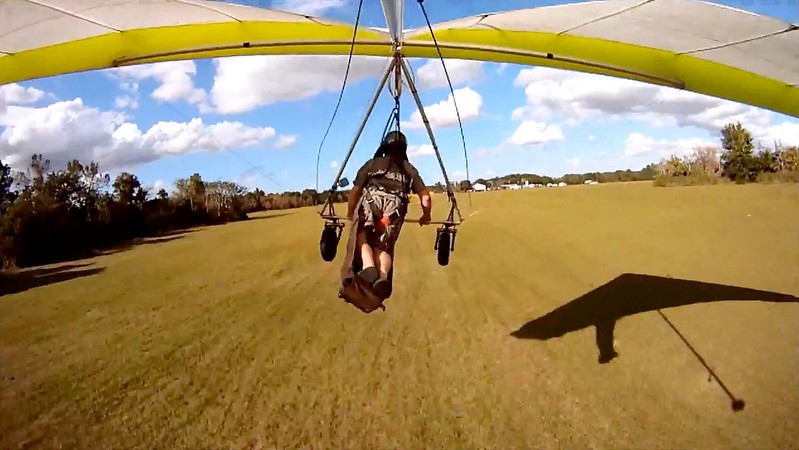
...or push out a bit. They don't feel much in the way of loading.
23-41510- My harness is attached to the keel at the suspension point.[/quote]
Guess you're sure at THAT point. But lotsa people who are sure at THIS point:
2-112
http://c2.staticflickr.com/8/7600/28811055456_925c8abb66_o.png
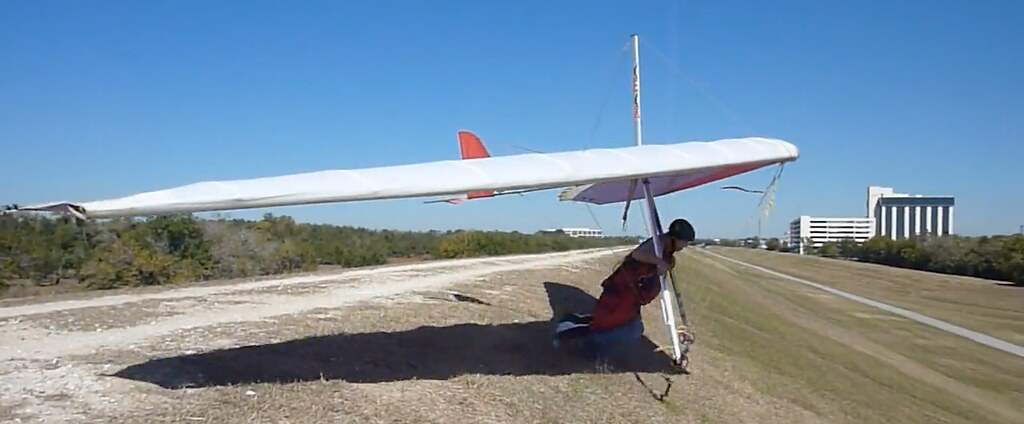
don't live long enough to get to that point.
23-41510This allows my body to swing forward and backward (and side-to-side) to control the glider by shifting my weight.[/quote]
http://2.bp.blogspot.com/-cXihaBSDeqY/U-VS8JezFPI/AAAAAAAAAl0/zRpsVgVn3wU/s1600/Cliff+hang+glider+diagram.jpg
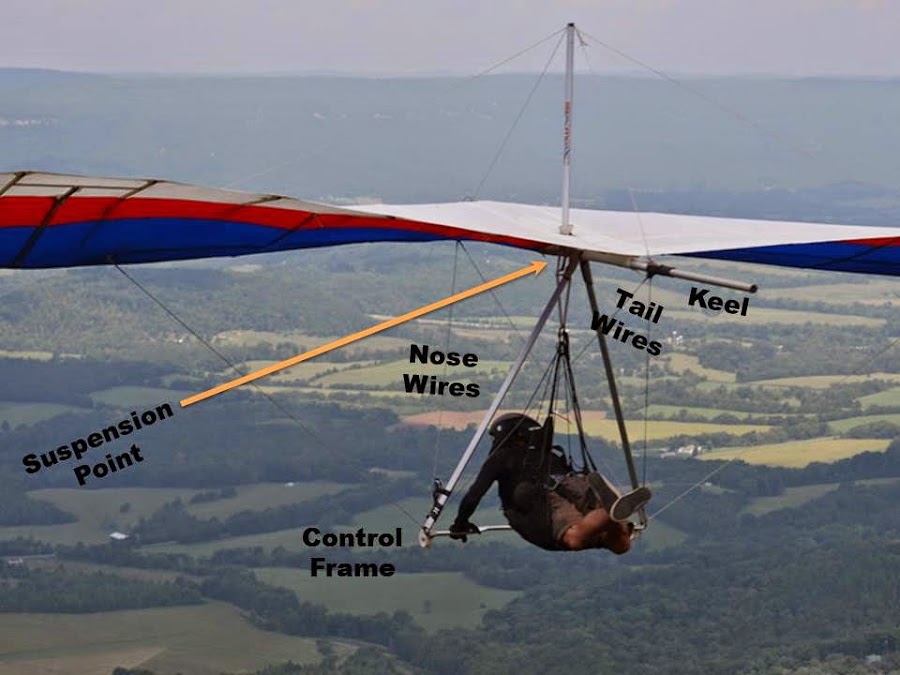
That allows you to control the glider by differentially tension opposing wires. If a towline is pulling sideways and shifting your weight to the left...
23-41510
http://farm4.staticflickr.com/3845/14633579358_20ea5b5c86_o.png
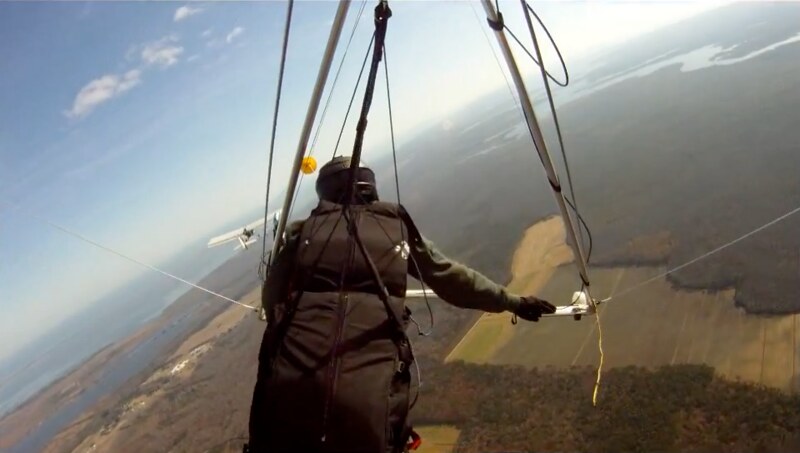
...then what's the glider do?
In the situation of my crash, I was skimming extremely low to the ground (a few inches at times)...
And eventually less.
...down a slope...
Along with the wind.
...that was descending at the same angle of slope as my glider (that is, I was neither gaining nor losing altitude relative to the slope). The ground was rocky, and at some point, the control frame hit a rock, which stopped it instantly. The momentum of the glider was then pivoted forward so that the nose of the glider hit the ground next, also stopping instantly (and breaking the keel). The momentum of my body rocked forward at the suspension point so that the top of my head struck the keel (or possibly the sail just to either side of the keel?), which also stopped my body instantly (and disclocating two neck bones).
Explanation of my Crash (for hang glider pilots):
I plan to submit an accident report to USHPA sometime after Nationals finishes up, with the complete unedited launch sequence photos.
Maybe they'll publish it along with some of their great stories about what a blast somebody had this spring flying in Venezuela.
But my memory of it is:
After getting prone, I was flying really low (the photos show that my legs were dragging the ground, kicking up rocks, and my jeans were torn and I had abrasions on both legs; I didn't realize I was that low, I just knew I was in trouble.)
I couldn't pull in for more speed, because I was so low.
At one point I felt that the glider was about to stall, and I had maybe 2 feet of altitude, so I dropped my hands from the downtubes to the base tube and pulled in to gain speed.
This un-stalled the glider, but now I could see that I was "diving" at the ground. I remember thinking I needed to push out to avoid the ground, but from looking at the photos, I'm not sure whether it got past the thought to the action; it doesn't look like it, judging from the angle of attack...
You can't tell the angle of attack looking at photos - just the pitch attitude. Though in this case, closely related.
...and there is now a bush in the foreground so that you can't see my arms.
The next thing I remember was the impact, and then nothing until several minutes later when they were putting the collar on me.
Cause: as typical, 100% pilot error.
Nah... Instructors like accepting compliments for the great jobs they've done when people nail traffic cones. They deserve a lot of credit...
Clifford Rice - Saint Petersburg - 24908 - H4 - 2010/09/03 - Paul Tjaden - AT FL AWCL CL FSL RLF TUR XC
...when people wake up to find themselves being fitted with stabilizing collars.
Contributing factors:
No experience launching from a long rocky slope.
No mountain launch santioned comp experience.
Did the meet heads address any of those sorts of issues before you rearranged your neck?
Elaboration:
Even though I'm primarily an aerotow pilot...
Whoa! That shit's pretty dangerous! You've got the complexity of all that extra equipment and huge chances of something going seriously wrong. It's amazing that you didn't get your neck rearranged until you were foot launching on a shallow rocky slope with a light tailwind.
I have plenty of mountain launches, including several in the glider and harness I was using at the comp. However, they were all ramp or cliff launches. My only slope launches were the big training hill at Lookout Mountain Flight Park which actually starts out as a shallow slope, but you don't really get in the air until it drops off to a steep slope. So I really had no experience running a long way down a shallow slope.
You can practice that sorta thing on flat ground in the LZ, ya know.
I've flown 5 mountain comps at Tennessee Tree Toppers Team Challenge (which are not sanctioned but simulate the launch "pace and feel" of a sanctioned comp)...
Isn't that the one where Bill Priday was wind dummying for what was supposed to have been the first round at Whitwell and ran off the ramp without his glider nine years ago? Right across the valley from where you're launching at Henson?
...and 4 sanctioned U.S. aerotow comps (in Sport Class with no start clock).
I hope you were using an appropriate weak link with a finished length of 1.5 inches or less provided by the meet organizers and in a manner approved by the meet organizers. All kinds of bad things can happen to you if you aren't. Low level lockout comes to mind.
At Team Challenge there were always 4 launch assistants (two wing wiremen, one keel man, plus the pre-ramp hang check)...
Very clever. If you do a pre-ramp hang check you can ignore the USHGA regulation which states:
With each flight, demonstrates a method of establishing that the pilot is hooked in just prior to launch.
And if there's any doubt beyond that one or more of the wire crew can ask you if you've had a hang check. And you can answer, "Yes! Of course! Thank you for your concern." and then check to make sure your chinstrap is buckled.
...and they provided guidance on the flags below launch and the sock above launch, as well as making sure no one launched with un-level wings or a bad nose angle.
These guys sound GOOD! Same ones who crewed for Bill? He went off perfectly in a good cycle.
The Sport Class at the comp I crashed at, was intermixed with the Open Class in the launch order, and using the same start clock. There were two launch lines and pilots were launching in fairly rapid succession, as pretty much everybody decided to launch at about the same time.
Mental Mistakes:
When it was my turn, I felt the pressure to step up and launch quickly.
I did that wind dummying in a tailwind for the first round of the '88 Nationals at the Springer Launch of Raccoon Mountain at Chattanooga too. Also ended up in crumpled heap at the bottom of the fifteen foot drop-off.
That was the point at which the meet heads decided it would be a better idea to launch gliders INTO the wind and moved everybody to Lookout while I recovered my wreckage.
I did not check the wind flag.
Mine was seriously tailing when I crawled back up.
I don't remember consciously checking the nose angle.
I didn't yell "clear" (no one did), but that has always been my mental cue to commit to the launch.
Try yelling "Clear! Hooked in!" so nobody worries about you not being hooked in.
Physical Mistakes:
1. I launched in a bad cycle (see flag in third photo below). From looking at several other launch sequence photos, almost everybody launched in a good headwind. There were two that launched in a calm and they were both "scary low" but obviously not as bad as mine.
On the evening of 1992/06/20 at Woodstock I watched several gliders going off fine in a light headwind and then tried to run off without checking the ribbons after it had gone katabatic. Didn't know there was a felled White Oak trunk concealed in the low Sassafras on the left side of the slot towards which I was groundlooping. Broke the fuck outta my right foot and it's never stopped hurting. Over 22 years now.
2. I didn't keep running long enough (or fast enough), and/or I didn't hold my correct position relative to the control bar. The photos show me "falling behind" the control bar.
Here are a subset of the photos from the sequence. One tricky part was that the camera was hand-held and the photographer naturally rotated the camera as he followed me unexpectedly downhill, so it's not possible to exactly judge the angle of the slope or the angle of attack of the glider. On the latter photos, I used the cirrus clouds as a reference to rotate them by 15 degrees.
http://1.bp.blogspot.com/-NdA5REZjjGY/U-VkBUT82fI/AAAAAAAAAmM/k52rpuxb3CU/s1600/IMG_3423e.jpg
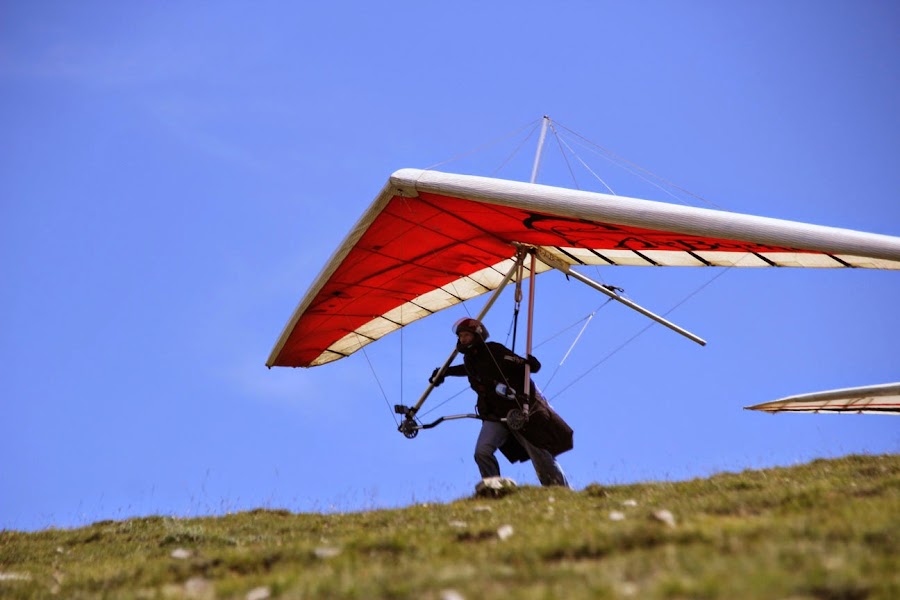
Unfortunately the series didn't start early enough to check my transition from having the downtubes on my shoulder to having the glider lift and tension my hang strap, so this is what I have to start with.
Ya know... A few really anal people lift the glider themselves...
13-03110
http://c2.staticflickr.com/4/3697/13700915564_87a2a336b0_o.png
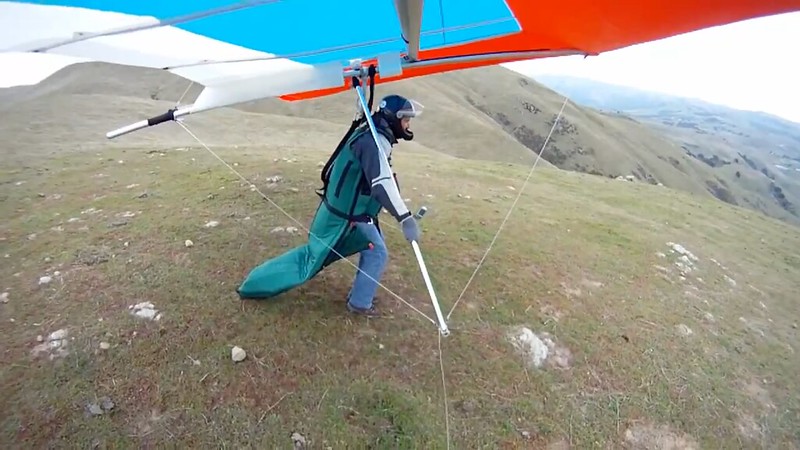
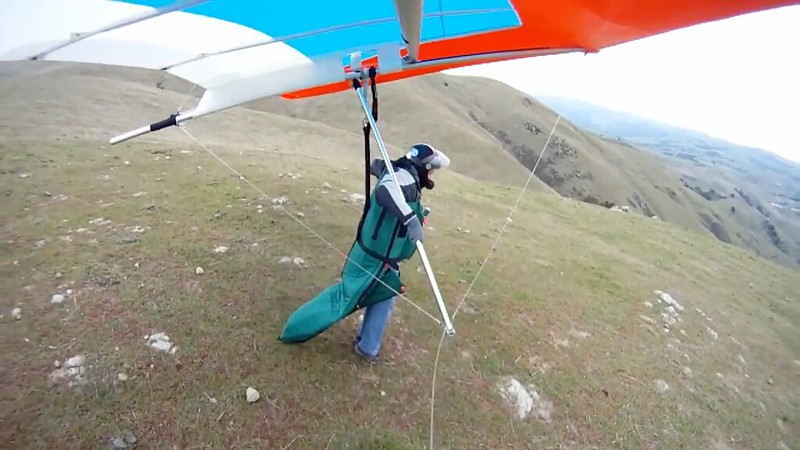 http://c1.staticflickr.com/3/2912/13700562685_86575e9220_o.png
http://c1.staticflickr.com/3/2912/13700562685_86575e9220_o.png
14-03129
...and tension their hang straps before getting to a transition point like THIS:
8-2401
http://c1.staticflickr.com/3/2926/14074537022_03a98e4a57_o.png
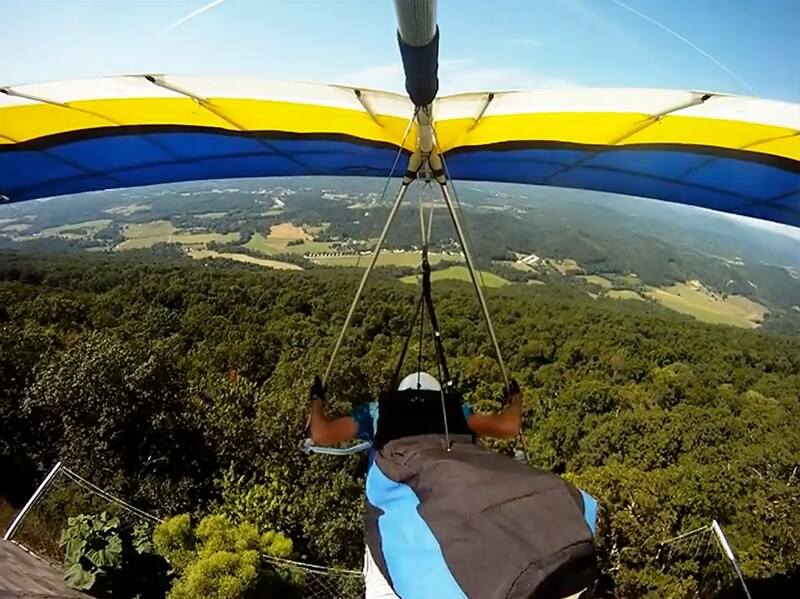
...just to make extra sure that the hang strap WILL be tensioned... But if you've had somebody give you a pre-ramp hang check there's really not much point. Besides, lotsa these ramps have safety nets now so that level of redundancy is a bit ridiculous. Plus, a hook-in check like Eric Hinrichs does can give you a dangerous false sense of security.
I don't know if my nose was this high before that, or not.
http://1.bp.blogspot.com/-JU048t6QbK8/U-VkBSWOAsI/AAAAAAAAAmE/7fI6nvDZVa8/s1600/IMG_3426e.jpg
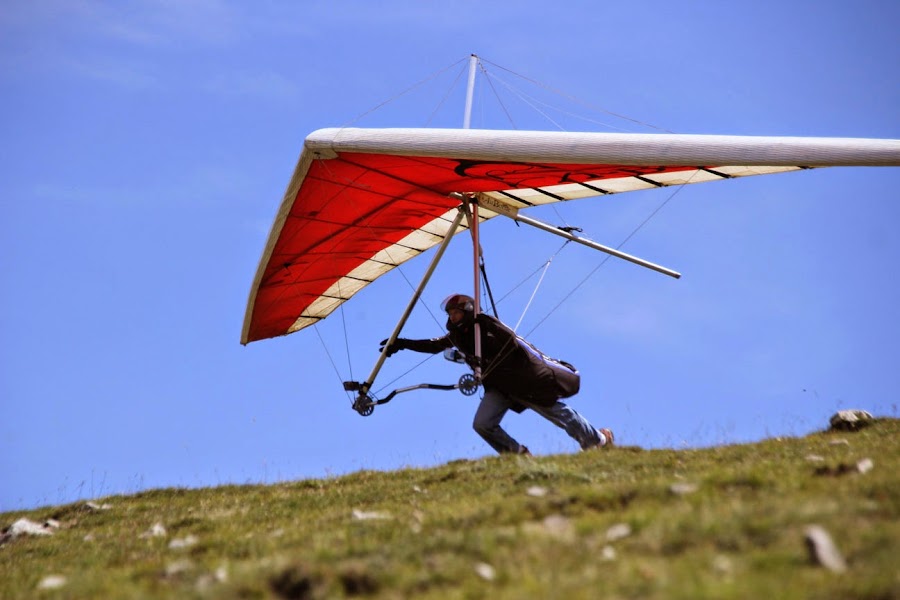
This is where I don't completely understand what's going wrong. I seem to be falling behind / falling into the glider.
No, you're falling behind / into the glider at this point. You're already pretty fucked.
http://2.bp.blogspot.com/-anllQKc9Qas/U-VkBtk6QzI/AAAAAAAAAmI/B5Yz9geEIN0/s1600/IMG_3428e.jpg
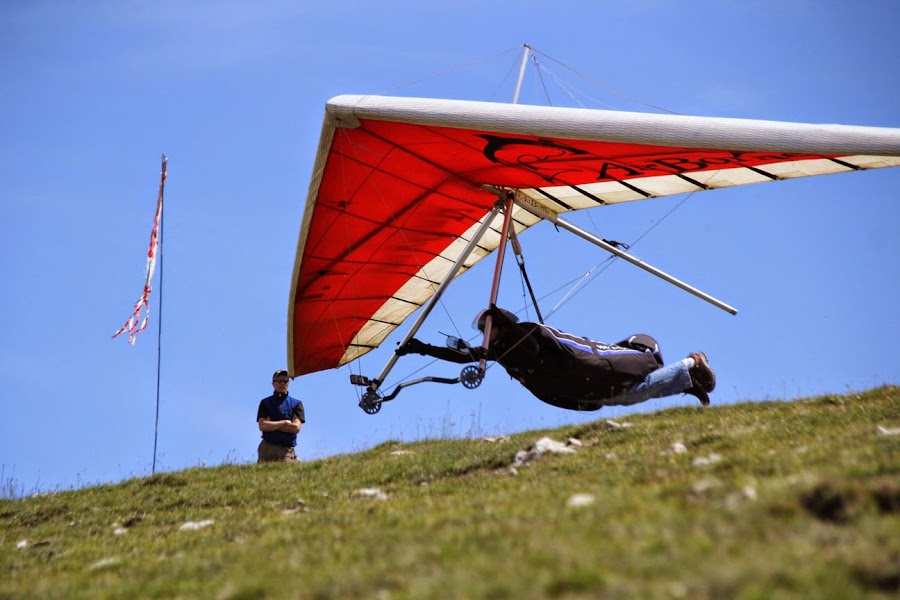
Probably the worst point.
Yeah, that's got my vote. Trying to force the glider into the air. See what happens when you're used to having airspeed?
Note the tail wind. From the spectator and the flag pole, the camera appears level here. I am still in grapevine grip.
Worse yet, you're airborne.
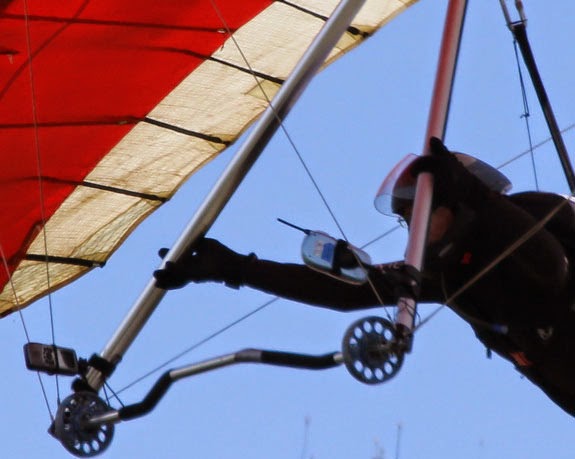
Close-up of previous photo - I am still in grapevine grip.
http://3.bp.blogspot.com/-QH26_qoQ-DQ/U-VkCnIhv5I/AAAAAAAAAmY/slf2MdSE_8s/s1600/IMG_3436e.jpg
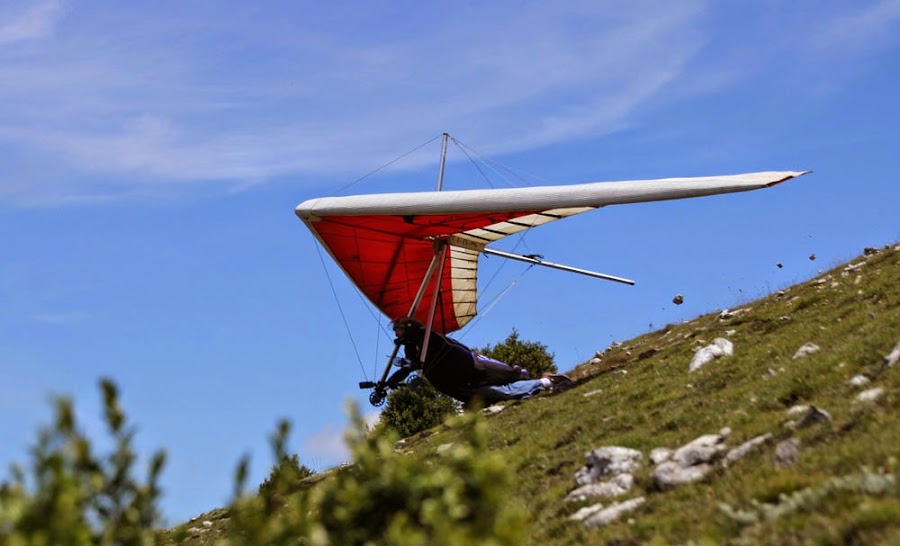
THIS AND FOLLOWING PHOTOS ARE ROTATED 15 DEGREES.
Realizing I am stalling, and having a little altitude...
Lotsa times that beats stalling and having...
http://4.bp.blogspot.com/-bRrpHNa68iY/UQ6Pv9gRZyI/AAAAAAAAjTg/Hc22bx5122Q/s2048/20943781_BG1.jpg

...LOTSA altitude.
I finally drop my hands to the base tube...
Isn't there a five second rule to which you're supposed to adhere?
http://1.bp.blogspot.com/-kXpVkp7jYug/U-VkCofsj_I/AAAAAAAAAmc/YHV0FHuNmNM/s1600/IMG_3437e.jpg
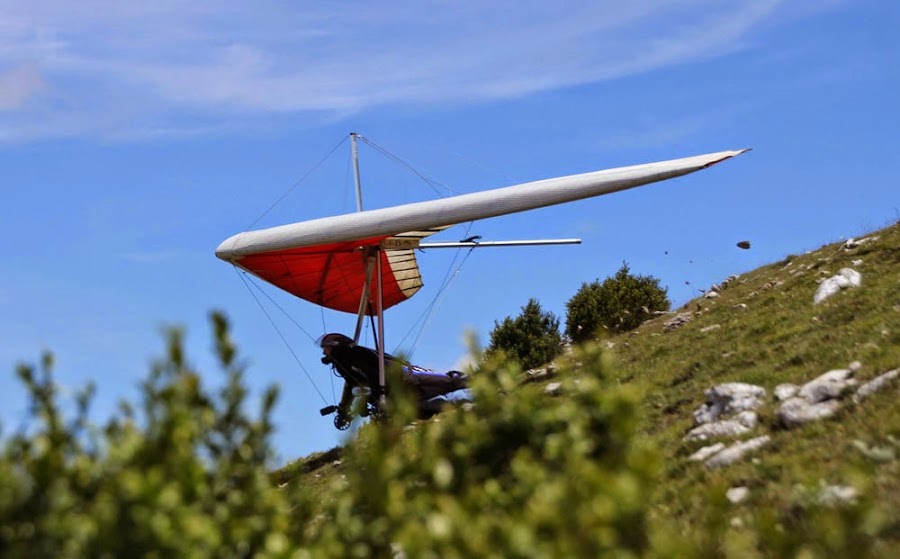
...and pull in...
http://1.bp.blogspot.com/-0bpqZ6Pgf94/U-VkC63UaYI/AAAAAAAAAmg/_1FzIYvFIpo/s1600/IMG_3438e.jpg
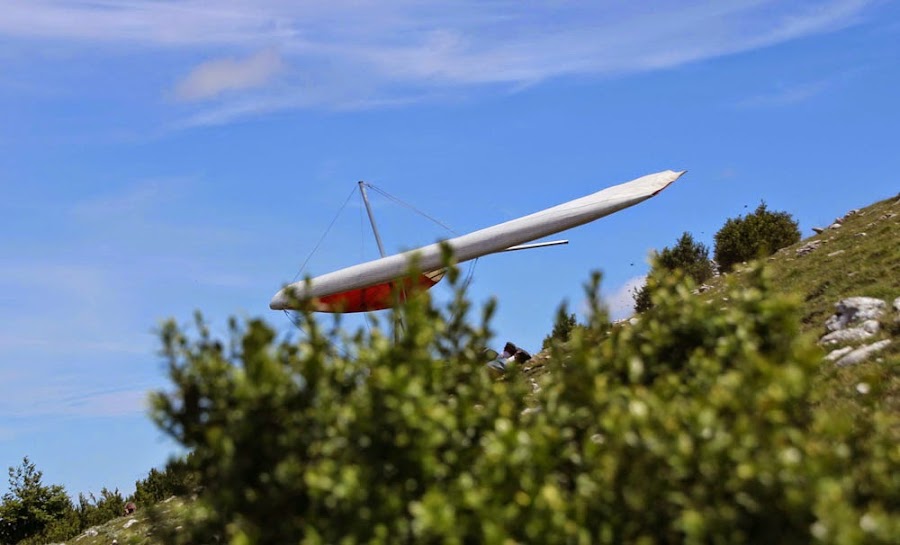
...a little too far?
I doubt it. I think you were flying a picnic table at that point.
It's not clear from this photo whether I over-rotated the nose down (pulled in too far), or whether at this point, the control bar has already hit the ground and started rotating the glider.
You were doing what you could at that point and doing it right but the glider was gonna crash anyway so there's not all that much point in worrying about it. Worry about how to NOT GET INTO a situation like that in the first place. Much easier.
http://2.bp.blogspot.com/-84WYlDiN0Oo/U-VkEWtXPjI/AAAAAAAAAnE/dlDbls35nSY/s1600/IMG_3439e.jpg
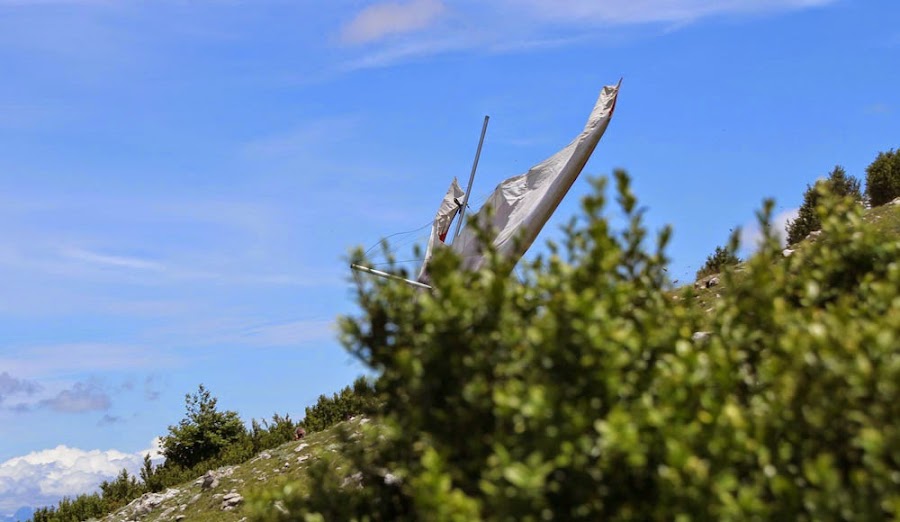
Good to see you were able to use your neck as a crush zone and keep the glider from getting banged up any worse.
Why?
- Your USHGA number is way lower than mine is which means you've been around since the Seventies. When was the last time you saw an accident report in the magazine that wasn't a total joke?
- You total blew a shallowish downwind foot launch. You didn't run the glider into the air, you tried to force it, pushed way the fuck out when, given that you weren't running, you should've been skimming as low and fast as possible. What's to learn?
- You're flying where Bill Priday was killed running off the ramp without his glider, Rob Kells published a half decent article on hook-in checks at the time, you still can't be bothered to do hook-in checks and violate the USHGA regulation requiring them every time you foot launch, neither you nor anyone else seems capable of learning anything from something that brain dead obvious, but we're gonna start seeing fewer launches blown the way you blew yours because of a report?
- You obviously do the vast majority of your flying at Quest where eighteen months before your crash a tandem aerotow instructor pro toad was killed by a combination of his bullshit bridle and moronic Quest Link. You didn't engage in any discussions, you watched Paul lie his ass off about what happened and why and then watched USHGA lie further with Paul's lie as a foundation. And it's a no brainer that you're at least using the same fishing line as a pitch and lockout protector.
Save the reporting and just get more people organized in prayer circles for crash prevention and recovery. If you wanna do something useful get involved in some of the discussions about crashes in which you're not the star. And don't waste the effort sending anything to the total pieces of shit running USHGA.
